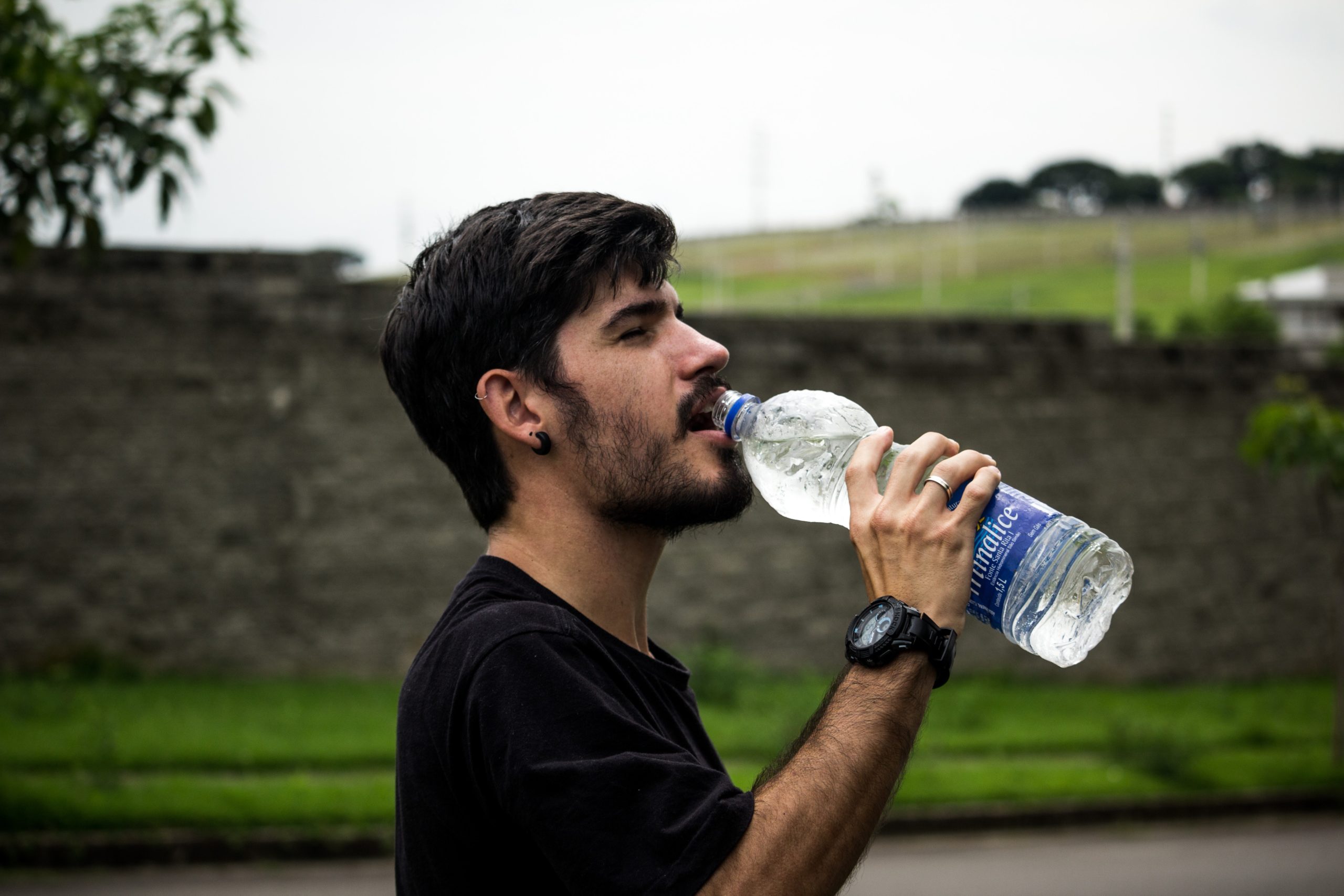I’ve said this a gajillion times by now…
Your body is one kick-ass, incredible piece of machinery.
All of our complex inner systems and components work brilliantly in unison to propel us forward and allow us to do the things that make life so amazing.
I find that the more we learn about how these systems work, the better we are able to leverage them to help us build a better body.
Today I want to talk about energy…
Or, more specifically, how your body goes about creating the energy that it needs to power up all the inner and outer workings.
Let’s dig in…
What Exactly is Energy?
Energy is all around us.
Some of it you can feel (like the sun’s rays shining on your face or that crazy speed you generate as you bike down a hill) and some of it you can’t (like energy transmitted through cell phone towers).
Energy is essentially the ability to do work.
The body is no different. It requires energy to do work. And it gets this energy from the foods we eat. Food is the body’s source of energy.
But how exactly does the body convert energy from our food into the every day actions we perform?
It’s called bioenergetics.
Bioenergetics is the flow of energy in a biological system and primarily concerns the conversion of food – or large carbohydrate, protein, and fat molecules that contain chemical energy – into biologically usable forms of energy. The breakdown of chemical bonds in these molecules releases the energy necessary to perform physical activity. [source]
Understanding Metabolism
Metabolism is the sum of all chemical reactions in the body.
Any process that breaks down molecules is called a catabolic process and is generally accompanied by a release of energy.
When smaller molecules synthesize (combine) to form larger molecules (using the energy released from catabolic processes), it is called an anabolic process.
Metabolism simply refers to your body’s constant state of catabolism and anabolism as energy obtained from catabolic reactions is used to drive anabolic reactions.
Pretty simple, right?
Essentially, your body is constantly breaking down and rebuilding molecules.
And it does this using an intermediate molecule known as Adenosine Triphosphate (ATP).
ATP is your body’s energy currency.
This high-energy molecule stores large amounts of energy which gets released when its chemical bonds are broken.
And this, my friends, is the energy used to power the body.
But ATP isn’t very abundant.
No way! There’s only so much of it available.
But being the incredible machine that it is, the body has the capacity to create and store ATP to use for energy.
Muscle cells are able to store a little bit of ATP and the body has the ability to continuously produce ATP within its cells.
There are three different metabolic pathways, or energy systems, that the body can use to produce ATP.
Which specific energy system the body uses is primarily determined by how much energy your body needs and how quickly it needs it.
Keep in mind that these energy systems rarely work in isolation. Often, the three systems work in unison to produce ATP, with each contributing to varying degrees.
Three Energy Systems
The replenishment of ATP in muscle is accomplished by the following three basic energy systems:
- Phosphagen Energy System
- Glycolitic Energy System
- Oxidative Energy System
The Phosphagen and Glycolitic energy systems are anaerobic systems (they operate without the presence of oxygen) and they are not very efficient. The Oxidative energy system is aerobic – it requires oxygen to create ATP – and is very efficient.
Let’s look at each system in a little more detail…
1. Phosphagen Energy System
Also known as the ATP-CP (Creatine Phosphate) Energy System or Anaerobic Energy System.
The Phosphagen energy system is the least efficient energy system.
It is anaerobic, meaning it produces ATP without the presence of oxygen.
Without access to oxygen to create ATP, this energy system utilizes stored ATP. Stored ATP is broken down and re-built using stored creatine phosphate to create one ATP molecule.
This one ATP molecule will give you a maximum of about 10 seconds of super intense effort.
This system is primarily designed to be used during very short-term, high-intensity activities where there is a high demand for ATP to be delivered quickly.
So when you perform a super intense activity, like sprinting or kettlebell training, where the body is unable to get enough oxygen to the muscles in time, the phosphagen system jumps in.
Once the stored ATP is depleted (within those 10 seconds of super-intense activity), the ATP can no longer be provided at the same rate and the body is forced to slow down.
In other words, fatigue occurs very rapidly and your intensity levels drop.
At this point, the second energy system steps in…
2. Glycolitic System
Also known as the Lactic Acid Energy System
Once the Phosphagen system is depleted, the Glycolitic system steps in.
This energy system provides fuel for up to two minutes at maximum intensity.
The Glycolitic energy system is named after the process that creates the energy – glycolisis.
During glycolisis, carbohydrates in the form of glucose (sugar found in the bloodstream) or glycogen (sugar found in muscle cells) are broken down through a series of chemical reactions.
Remember that a breakdown of molecules (catabolism) releases energy. This is exactly what is happening here.
When you break down glucose, you create ATP molecules that can be used for energy.
Note that if glucose is broken down, two ATP molecules are produced and if glycogen is broken down, three ATP molecules are produced.
Now, since this breakdown of glucose happens in an oxygen-free environment, it is considered an incomplete chemical reaction. This incomplete reaction creates a by-product that you may very well know as lactic acid – that bad-ass burning sensation you get in your muscles during the end of a set of pushups or at the end of an intense run.
The more glucose that is broken down, the more lactic acid is produced.
But as lactic acid gathers, it also begins to slow the contraction speed and strength of the muscle.
It is this accumulation of lactic acid that eventually forces us to slow down and lower our intensity even further (if you don’t, you can reach a state called lactic acidosis in which the muscles temporarily fail – or simply can’t contract).
This lactic acid buildup is precisely why this system is so inefficient.
Note that you can actually train your body to lower the production of lactic acid so you can train harder for longer (I’ll touch more in this later).
So after the two-minute mark, you are forced to lower your intensity even further.
This is where the third energy system steps in…
3. Oxidative Energy System
Also known as the Aerobic Energy System
Now that your intensity has dropped below the threshold, the body is able to bring in sufficient oxygen to the muscle cells in order to produce ATP.
The oxygen is delivered by the cardiovascular and respiratory systems to meet the demand for oxygen in the exercising muscles.
Here’s the beautiful thing about ATP production in the presence of oxygen…
It’s incredibly efficient.
The Oxidative system has the capacity to produce HUGE amounts of ATP.
And it does it in one of two ways:
- Continuing to burn glucose to produce ATP
- Using fatty acids to produce ATP
Let’s look at the differences…
If the intensity is still moderate, but low enough to allow the cardiovascular and respiratory systems to bring in enough oxygen, glucose is the preferred fuel and is broken down to create ATP.
However, since the chemical reaction is now taking place in the presence of oxygen, it is a complete chemical reaction and there is no production of lactic acid (you may have heard these chemical reactions referred to as the Krebs cycle back in biology class).
This process is very efficient, producing roughly 38 molecules of ATP for every unit of glucose (compare this to the two or three that are produced by the Glycolitic system).
The by-products of the reaction are carbon dioxide, water, and heat. Nothing can stop you.
What’s interesting about this energy pathway is that it is technically only limited by your cardio-respiratory system’s ability to deliver oxygen.
And you can train your cardio-respiratory system to become stronger and more efficient.
This is really what’s happening when your ‘fitness levels’ improve.
Now, if the intensity of the activity drops to even lower levels (during activities like walking or even rest), your body is capable of shifting to fat metabolization.
This is called fatty acid oxidation.
This system is even more efficient than the last, as you can generate roughly 100 molecules of ATP for every unit of fatty acid.
This is why it’s so crucial to add healthy fats into your diet. Keep in mind that although fat is the fuel your body is designed to run on, it will choose to use glucose if it is present (through your diet). I’ll touch on the nutrition aspects in the coming posts.
So those are your three energy systems.
Let’s see how they work together in a typical real-world scenario…
How do these Energy Systems play out in real life?
To help you better visualize these energy systems and how they work together, let’s take a look at how your body shifts between these three systems in a (somewhat) common day-to-day scenario.
Imagine you just woke up. Another typical workday. Coffee and breakfast are waiting for you downstairs (you must have a good spouse!).
You take a shower, scarf down your food, and take a few minutes to read the newspaper.
As you’re resting and going through your menial morning routine, the Oxidative (aerobic) system is activated because your intensity levels are low enough for oxygen to be readily supplied by the cardiovascular system. ATP is produced efficiently.
Note: I’ll dig into the nutritional aspect of this in future posts as what you eat for breakfast and throughout the day plays an important role.
You glance at your watch, notice that it’s time to leave, slip on your Nikes (like me) and head for the bus station.
As you start walking, your intensity levels increase slightly but are still low enough for your body to bring in enough oxygen. So your aerobic system continues to work although perhaps it begins to predominantly use glucose to produce ATP (since glucose will always be used before fatty acids if present).
Suddenly, out of the corner of your eye you spot the bus. It’s early!!
You still have an entire block to cover to get to the bus stop and the bus is now ahead of you.
So you start sprinting all out. As your intensity levels rise quickly, the energy demand is immediate and very high. Oxygen can’t be delivered in time to produce that energy so the Phosphagen (anaerobic) system jumps into action and starts using the stored ATP and CP molecules.
After sprinting all out for 10 seconds, you start fatiguing and so you’re forced to bring your intensity level down just a bit. Now your other anaerobic system – the Glycolitic system – jumps in and starts burning glucose to create ATP to power your run.
You keep running and you start feeling a burning sensation in your muscles. That’s the lactic acid build-up that happens when glucose is burned inefficiently (without oxygen present).
You finally make it. You jump on the bus and fall over on the seat.
You’re now in recovery mode. The body begins to take in more oxygen than it would typically need at rest state, kind of like it’s making up for its lack of presence during the sprint. This is known as EPOC.
And the cycle continues.
Now that you’ve seen how this stuff plays out, you can kind of begin to put things together.
The question you should be asking is…
What drives a particular energy system?
What it is that dictates which of the three energy systems your body relies on primarily?
As you may have guessed by now, the key driver is intensity.
The intensity (and somewhat the duration) of the activity will determine which energy system the body turns to.
How do you Measure Intensity?
We need to be able to monitor intensity in order to be able to train and improve the various energy systems and intensity is a measure of our heart rate.
The best way to monitor intensity is using a heart rate monitor.
There are many tools that can help you do this, but the one I’ve found most effective is the Timex HRM watch and sensor.
I’ve been using my Timex watch to track the intensity of a lot of my workouts. It gives me a better understanding of not only what heart rates (intensities) I’m training at, but also how my fitness level is improving.
Here’s a graph I pulled from one of my skipping workouts (you’ll actually see me wearing it in that video):
You can see how my heart rate – BPM – changes over the course of a workout, peaking at the highest intensities and dropping during my rest.
It’s definitely an awesome tool.
So how do you know what heart rate to be aiming for?
First, you need to know how to measure your maximum heart rate.
Max Heart Rate = 220 – (your age)
Here’s what it looks like for me…
I’m 25 (soon to be), so my maximum heart rate is 195 BPM (beats per minute).
Once you know your maximum heart rate, you can easily calculate what heart rate training zone you can target to train different energy systems.
Here are the zones:
- Phosphagen System: 80%-90% of Max Heart Rate
- Glycolitic System: 70%-80% of Max Heart Rate
- Oxidative System: 60%-70% of Max Heart Rate
So, for myself, if I want to train my Glycolitic energy system, I’m going to aim to keep my training heart rate around…
195 bpm X 0.75 = 146bpm
My Timex HRM watch tells me exactly what my heart rate is at all times and lets me know if my intensity is getting too high or too low (ie. falling out of range).
There is a vast field of research done on training intensity and heart rate zones. What I’ve presented here barely scratches the surface, but it should give you a good general understanding of how everything works.
Here’s an interesting PDF file I found online in case you’re interested in reading more about it.
How to Develop your Energy Systems
As I mentioned earlier, it is possible to improve the effectiveness and efficiency of your energy systems.
There are training strategies that are geared to develop each individual energy system and these strategies are often used by (good) personal trainers to help clients develop the efficiency of their energy systems. (They’re also extensively used by athletes)
I won’t go into detail about the strategies, but I’ll give you some ideas to play around with.
If your goal is to develop your Phosphagen system, for example, sprinting would be an ideal training method. It’s super intense and thus requires the use of stored ATP.
The one thing you’ll want to do when training your Phosphagen system increases the length of your rest periods. You want to provide your body with enough time for the ATP and CP stores to fully replenish.
If you don’t provide enough rest and the ATP isn’t fully replenished, you run the risk of using your Glycolitic system instead.
So proper rest is vital.
On the other hand, if you want to develop your Glycolitic system, you’ll want to do the opposite: you want to minimize your rest and prevent the full replenishment of ATP and CP stores. Without sufficient ATP storage, your body is forced to use (and develop) the Glycolitic system.
The more you work your Glycolitic system (or use it), the more efficient it becomes. The more you use this system, the less lactic acid will be produced and the more efficient the muscle cells will be at working with lactic acid. All of this allows you to train harder and longer.
To develop your aerobic energy system, use it! Walk as much as you can. Keep yourself active daily.
Conclusion
No matter what it is we do throughout the day, our bodies are constantly required to manufacture energy to power not only our actions but also the constant operations that are happening inside the body.
The three energy systems provide us with the ability to move at varying intensities at all times. Remember that the systems are never used in isolation; instead, they are always working together to power the body.
The more you know about how these energy systems work, the more you will be able to leverage that knowledge and use it to create more effective and efficient workouts.
I apologize for the length of this post, but I really hope you’ve learned something here.
Any questions, comments, or ideas are definitely welcome in the comment section below. I’d love to hear what you think.
And if you found this post useful, please show your love by sharing it with your friends on your favorite social networks!





